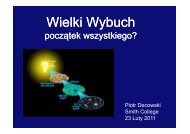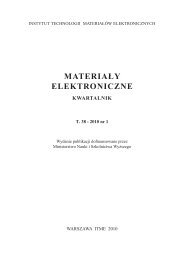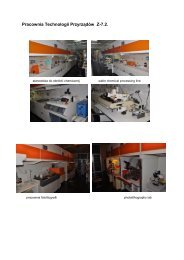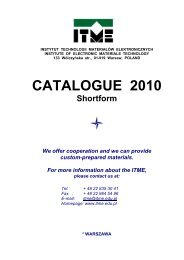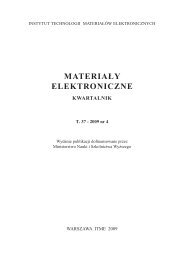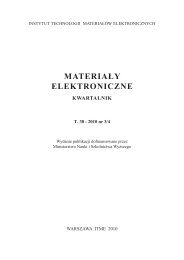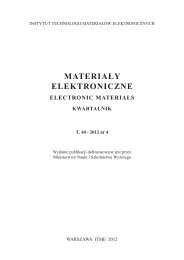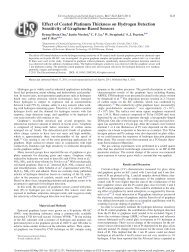Nr 1 - ITME
Nr 1 - ITME
Nr 1 - ITME
You also want an ePaper? Increase the reach of your titles
YUMPU automatically turns print PDFs into web optimized ePapers that Google loves.
W. Grzesiak, T. Maj, E. Radziemska<br />
The circuit presented in Fig.7 needs no transformer. It is designed for the voltage<br />
equalisation on two consecutive SCs by means of the current control.<br />
Fig. 7. Equalisation by means of buck-boost DC/DC converters [3].<br />
Rys. 7. Symetryzacja napięć za pomocą przetwornic obniżająco-podnoszących [3].<br />
Main advantages of the two previous versions are demonstrated in Fig. 8. Here,<br />
a power converter is connected to each supercapacitor. The energy stored by an SC<br />
with the highest voltage is transferred to the units with the lowest voltage. No energy<br />
is stored in the transformer as it is directly transferred.<br />
In practice, the circuits similar to those in Figs. 2, 5, 7 and 8 were initially tested<br />
by the authors with satisfactory results. Finally, the idea of Fig. 8 offering the best<br />
result has been adopted. As no practical data except for general idea can be found<br />
in technical literature [3], all circuit details had to be designed, calculated and tested<br />
to fit in with each particular set of supplementary components of the 6 - unit 3000 F<br />
series SC bank with an overall voltage of 16.2 V. Except for the multi-winding<br />
transformer, the optimum MOSFETs as electronic keys had to be chosen. The SC<br />
bank made in this manner fulfilled all technical requirements in final tests.<br />
On the occasion of the tests of Fig. 2, the effect of a small SC capacitance voltage<br />
dependence, not exceeding 2% per volt was investigated. It was considered, though<br />
unexpectedly, to have little practical influence. An important, but almost forgotten<br />
problem is the realisation of high current switches, especially threatened to be damaged<br />
during the discharging and charging processes in the SC circuits. Here, the<br />
MOS-FETs, as most convenient, though not fully satisfactory, were analysed and<br />
underwent testing, on a parallel with mechanical systems.<br />
113




